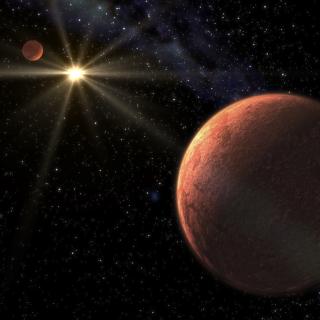Bibcode
Nowak, G.; Luque, R.; Parviainen, H.; Pallé, E.; Molaverdikhani, K.; Béjar, V. J. S.; Lillo-Box, J.; Rodríguez-López, C.; Caballero, J. A.; Zechmeister, M.; Passegger, V. M.; Cifuentes, C.; Schweitzer, A.; Narita, N.; Cale, B.; Espinoza, N.; Murgas, F.; Hidalgo, D.; Zapatero Osorio, M. R.; Pozuelos, F. J.; Aceituno, F. J.; Amado, P. J.; Barkaoui, K.; Barrado, D.; Bauer, F. F.; Benkhaldoun, Z.; Caldwell, D. A.; Casasayas Barris, N.; Chaturvedi, P.; Chen, G.; Collins, K. A.; Collins, K. I.; Cortés-Contreras, M.; Crossfield, I. J. M.; de León, J. P.; Díez Alonso, E.; Dreizler, S.; El Mufti, M.; Esparza-Borges, E.; Essack, Z.; Fukui, A.; Gaidos, E.; Gillon, M.; Gonzales, E. J.; Guerra, P.; Hatzes, A.; Henning, Th.; Herrero, E.; Hesse, K.; Hirano, T.; Howell, S. B.; Jeffers, S. V.; Jehin, E.; Jenkins, J. M.; Kaminski, A.; Kemmer, J.; Kielkopf, J. F.; Kossakowski, D.; Kotani, T.; Kürster, M.; Lafarga, M.; Latham, D. W.; Law, N.; Lissauer, J. J.; Lodieu, N.; Madrigal-Aguado, A.; Mann, A. W.; Massey, B.; Matson, R. A.; Matthews, E.; Montañés-Rodríguez, P.; Montes, D.; Morales, J. C.; Mori, M.; Nagel, E.; Oshagh, M.; Pedraz, S.; Plavchan, P.; Pollacco, D.; Quirrenbach, A.; Reffert, S.; Reiners, A.; Ribas, I.; Ricker, G. R.; Rose, M. E.; Schlecker, M.; Schlieder, J. E.; Seager, S.; Stangret, M.; Stock, S.; Tamura, M.; Tanner, A.; Teske, J.; Trifonov, T.; Twicken, J. D.; Vanderspek, R.; Watanabe, D.; Wittrock, J.; Ziegler, C.; Zohrabi, F.
Bibliographical reference
Astronomy and Astrophysics
Advertised on:
10
2020
Journal
Citations
70
Refereed citations
67
Description
We present the discovery and characterisation of two transiting planets observed by the Transiting Exoplanet Survey Satellite (TESS) orbiting the nearby (d⋆ ≈ 22 pc), bright (J ≈ 9 mag) M3.5 dwarf LTT 3780 (TOI-732). We confirm both planets and their association with LTT 3780 via ground-based photometry and determine their masses using precise radial velocities measured with the CARMENES spectrograph. Precise stellar parameters determined from CARMENES high-resolution spectra confirm that LTT 3780 is a mid-M dwarf with an effective temperature of Teff = 3360 ± 51 K, a surface gravity of log g⋆ = 4.81 ± 0.04 (cgs), and an iron abundance of [Fe/H] = 0.09 ± 0.16 dex, with an inferred mass of M⋆ = 0.379 ± 0.016M☉ and a radius of R⋆ = 0.382 ± 0.012R☉. The ultra-short-period planet LTT 3780 b (Pb = 0.77 d) with a radius of 1.35-0.06+0.06 R⊕, a mass of 2.34-0.23+0.24 M⊕, and a bulk density of 5.24-0.81+0.94 g cm-3 joins the population of Earth-size planets with rocky, terrestrial composition. The outer planet, LTT 3780 c, with an orbital period of 12.25 d, radius of 2.42-0.10+0.10 R⊕, mass of 6.29-0.61+0.63 M⊕, and mean density of 2.45-0.37+0.44 g cm-3 belongs to the population of dense sub-Neptunes. With the two planets located on opposite sides of the radius gap, this planetary system is anexcellent target for testing planetary formation, evolution, and atmospheric models. In particular, LTT 3780 c is an ideal object for atmospheric studies with the James Webb Space Telescope (JWST).
Related projects

Very Low Mass Stars, Brown Dwarfs and Planets
Our goal is to study the processes that lead to the formation of low mass stars, brown dwarfs and planets and to characterize the physical properties of these objects in various evolutionary stages. Low mass stars and brown dwarfs are likely the most numerous type of objects in our Galaxy but due to their low intrinsic luminosity they are not so
Rafael
Rebolo López

Exoplanets and Astrobiology
The search for life in the universe has been driven by recent discoveries of planets around other stars (known as exoplanets), becoming one of the most active fields in modern astrophysics. The growing number of new exoplanets discovered in recent years and the recent advance on the study of their atmospheres are not only providing new valuable
Enric
Pallé Bago